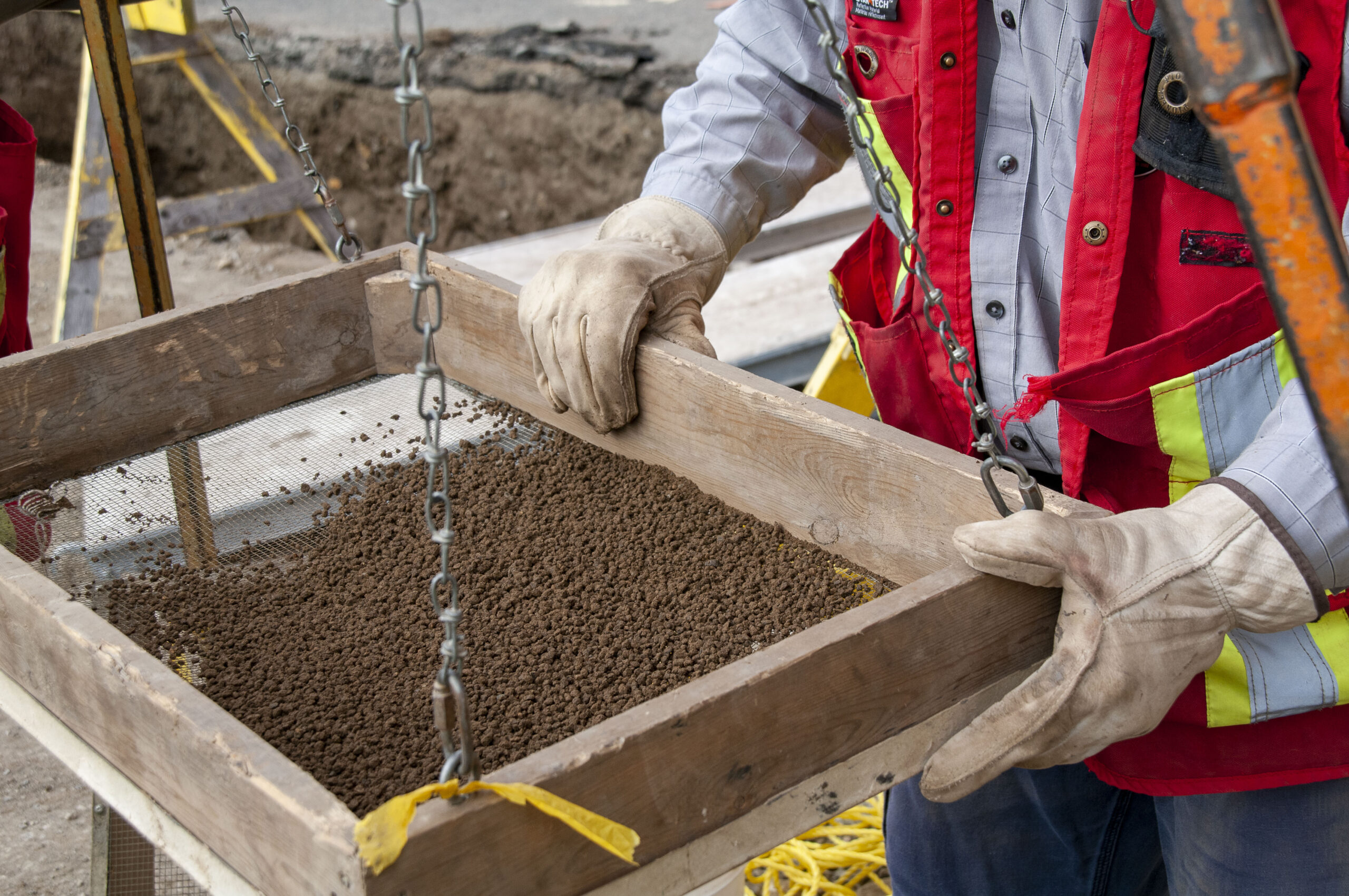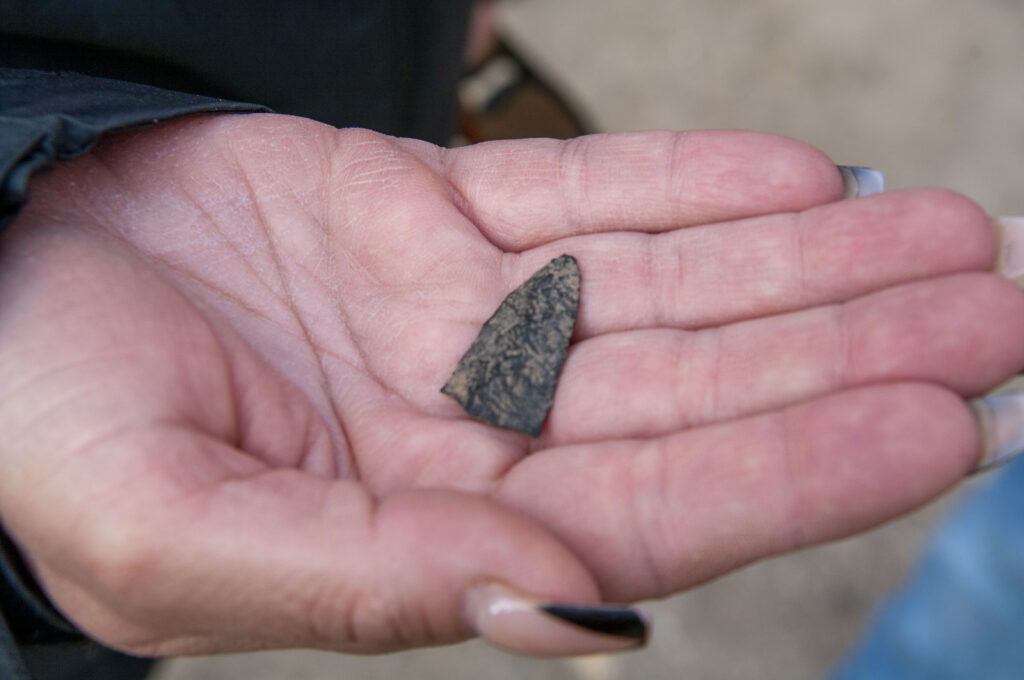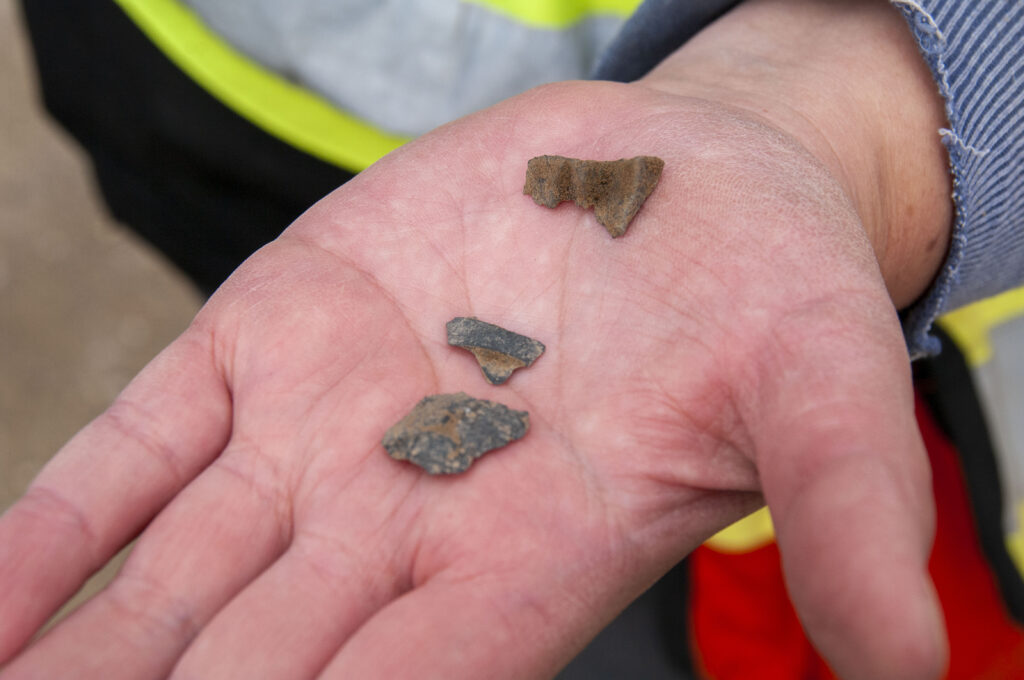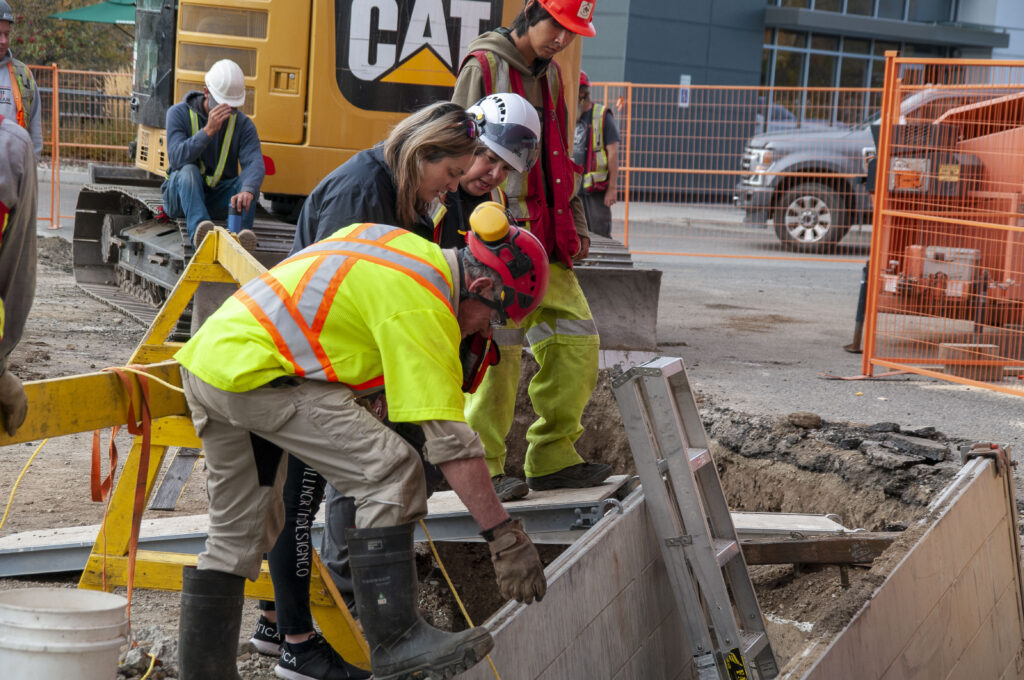Archeological Material Found at Boitanio Mall Excavation Site




On Thursday October 13th, 2022, archeological material was discovered during ground-disturbing excavation work at the Boitanio Mall renovation site.
Janda Group, owner of Boitanio Mall, has been working on renovating the mall to provide 82 new rental units and 164 parking spaces. General contractors of the Janda Group began the ground-disturbing work on the site the morning of Tuesday, October 11, with representatives from Williams Lake First Nation, Sugar Cane Archaeology (WLFN’s wholly owned professional archaeological services corporation) and Archer Cultural Resource Management Group present to collaborate and oversee the process. It was known by WLFN and Sugar Cane Archeology that the mall had been built over a significant archeological site when it was originally constructed in 1974.
Discovered Thursday was a projectile point, possibly from an arrow or a spear, and several pieces of lithic debitage (flakes of shattered stone created as a by-product of stone tool production). The projectile point is made of fine-grain volcanic rock. Sugar Cane Archeology’s Whitney Spearing says the pieces will be analyzed by x-ray in hopes that their origin can be determined.
“Upon excavating, there was a clear, dark lens of earth visible, not far below the asphalt of the parking lot. It suggested that we hit a layer of original, intact soil, undisturbed by the original mall construction” Spearing says. “Below that was a silty, sandy layer, which is the kind of environment where archeological material is frequently found.”
There are no further ground-disturbing excavations needed for the completion of the renovation project, so this is the only time when archeologists will have access to the site. Spearing says that although their window is small, there is much more work to be done. All the earth removed during the excavation (which proceeds through this weekend) will be examined; raked and screened for materials. Bulk samples will be sent to a lab for “floating” (using water to extract light organic materials like seeds and pollen from the soil).
During the initial construction of the mall in 1974, it was discovered that the building and associated infrastructure were located on an archaeological site containing pit houses (kikwillies), cache pits and a large number of human burials. Approximately 13 disarticulated human skeletons were unearthed and transported via truck to the site of what is now the A&W in Williams Lake. There, those human remains were discarded and pushed over the embankment without the involvement of Williams Lake First Nation or other First Nation communities.
Representatives of WLFN, Sugar Cane Archeology, and Archer Cultural Resource Management Group are grateful to Janda Group for their inclusion in the ground-disturbing excavation.
MEDIA CONTACT
Whitney Spearing, Senior Manager, Title and Rights
p. 778. 417.0196
e. [email protected]